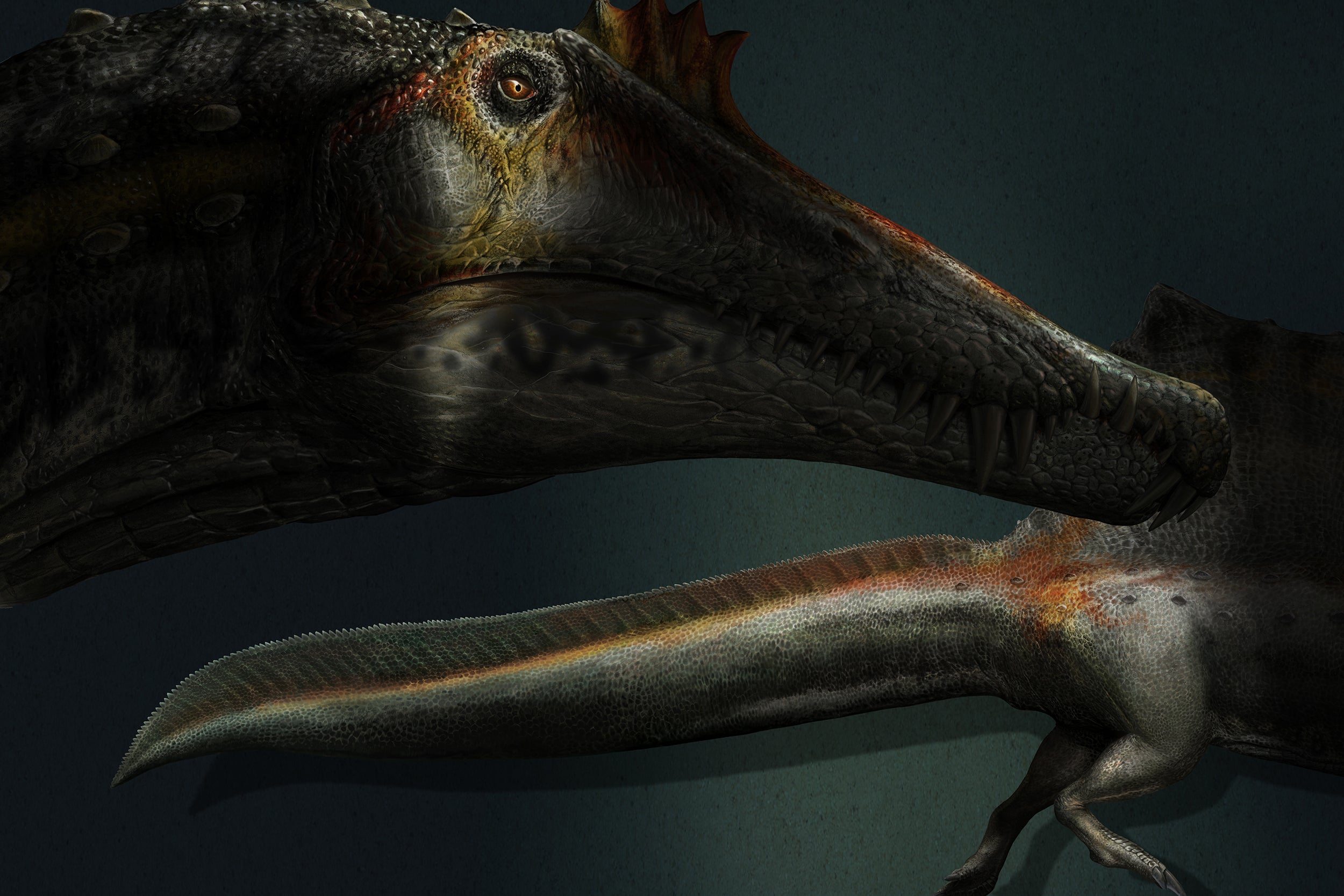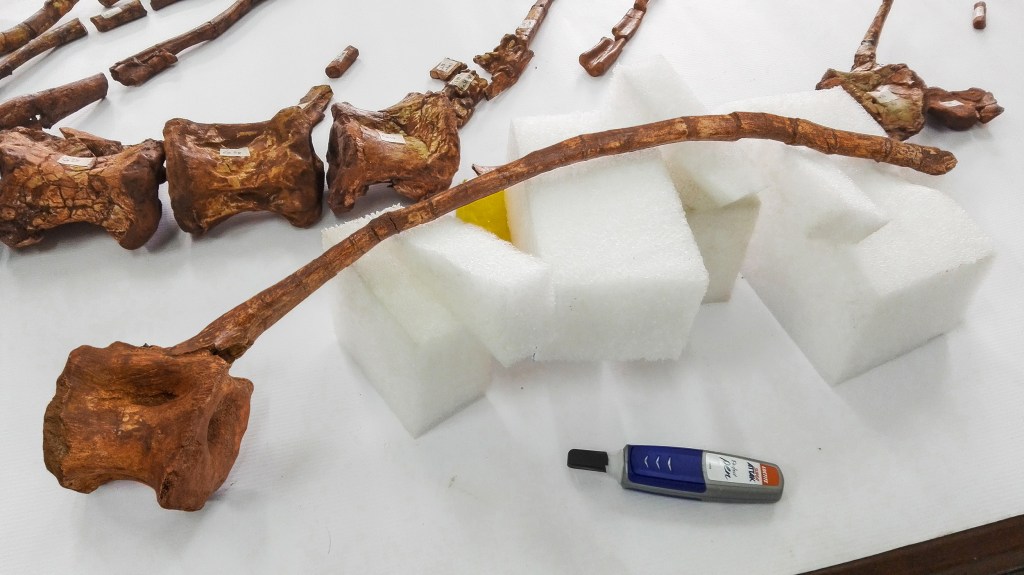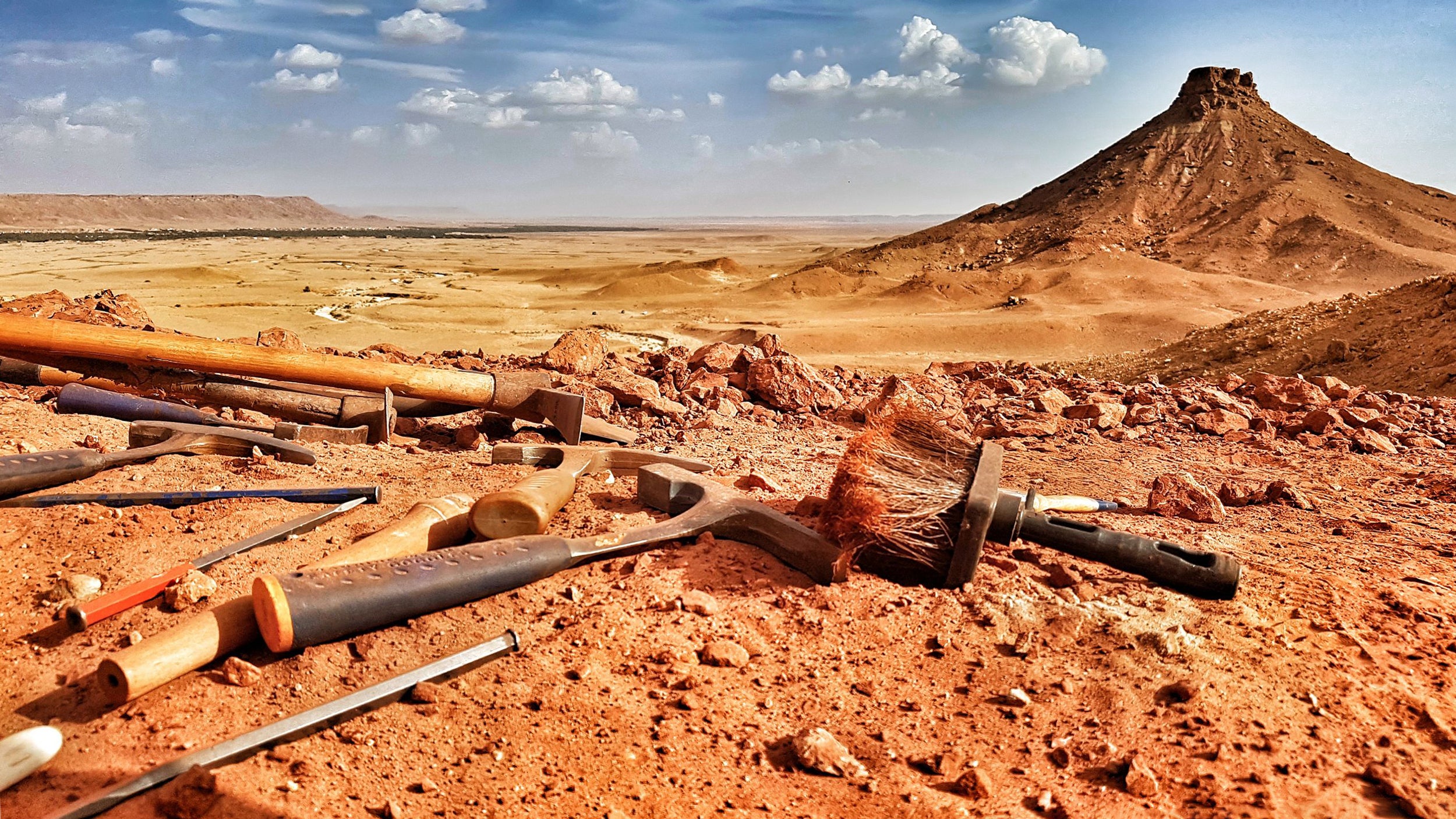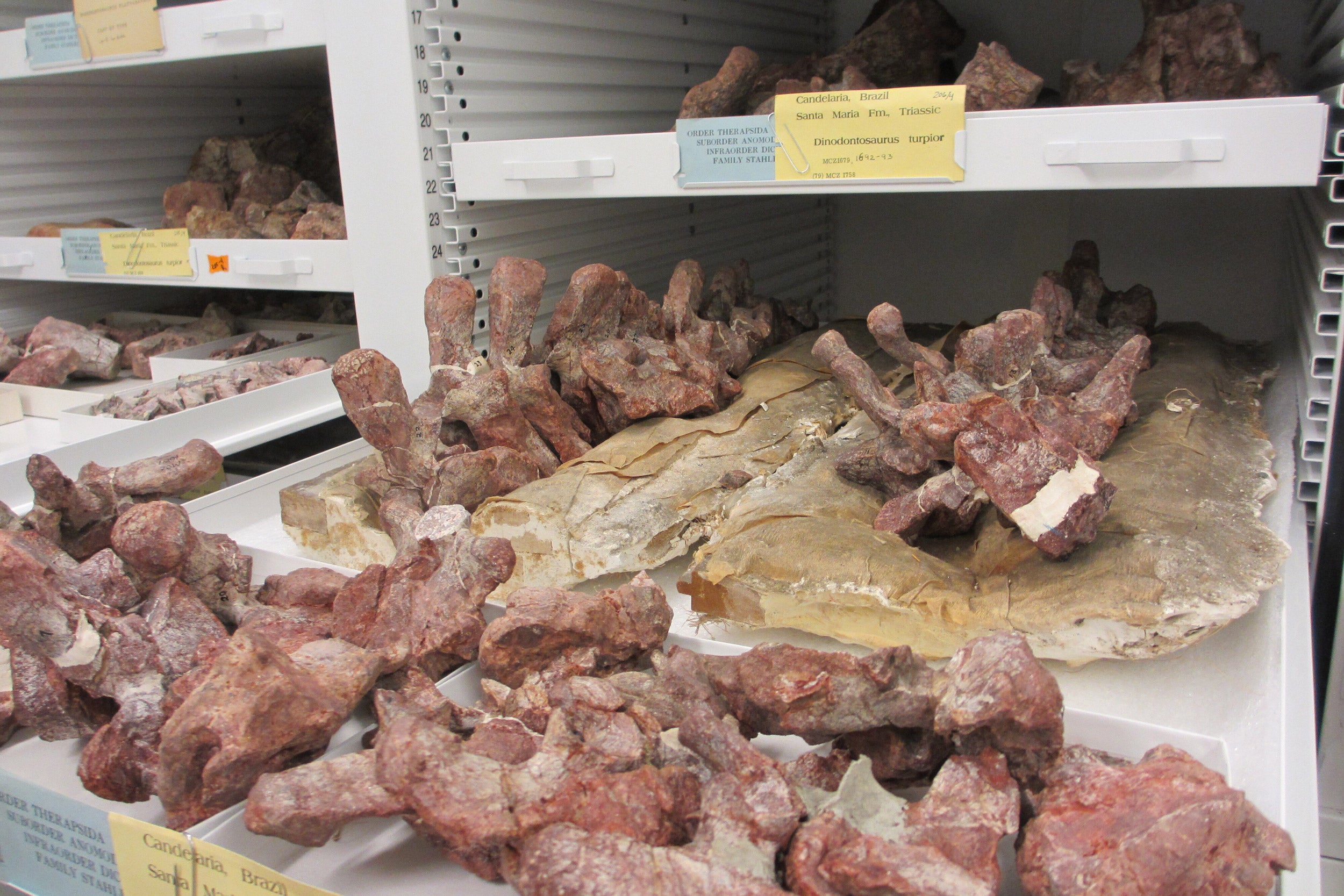
Researchers created rubber chips, slightly larger than a smartphone, with tens of thousands of “microwells” — small compartments designed to each hold a pair of nanoliter-sized droplets.
Credit: Michael James Butts
New paper suggests spinosaurus may have been aquatic
New paper argues the Spinosaurus was aquatic, and powered by predatory tail.
Back in the Cretaceous period, 145 to 66 million years ago, dinosaurs dominated the land and sky. They also, a new paper argues, terrorized the aquatic realm. Recent fossil evidence has revealed that the Spinosaurus aegyptiacus , among the largest of all known carnivorous dinosaurs, was a creature of the deep, with a center of gravity and a tall tail fin perfect for swimming. The same paper shares robotic modeling by two Harvard scientists that shows how that large, flexible tail fin — unique among dinosaurs — would have given the giant predator a deadly propulsive thrust in the water, similar to a salamander or crocodile tail.
A large, flexible, fin-like tail had long been theorized, explains the paper “Tail-Propelled Aquatic Propulsion in a Theropod Dinosaur,” in the April 29 issue of Nature . However, it took a new fossil and robotically-controlled model created by Harvard co-authors Stephanie E. Pierce and George V. Lauder , professors of organismic and evolutionary biology, to show its power.
Pierce said the new fossils were necessary to make their argument, as much of the fossil evidence of the Spinosaurus , unearthed by German paleontologist Ernst Stromer , had been destroyed in World War II. University of Detroit paleontologist Nizar Ibrahim , the Nature paper’s lead author, had located more traces of the dinosaur in Morocco in 2014, and in 2018 he went back, successfully excavating extensive Spinosaurus remains . The fossils included vertebrae with the meter-long spines of the fin’s skeleton attached — and raised questions about what they might mean.


Detailed view of the 31st caudal vertebra, with its long delicate spine supported by soft foam after preparation and repair in the laboratory. View of the Kem Kem region (south-eastern Morocco) from the excavation site of Spinosaurus.
Photos by Cristiano Dal Sasso and Diego Mattarelli
Detailed view of the 31st caudal vertebra, with its long delicate spine supported by soft foam after preparation and repair in the laboratory. View of the Kem Kem region (south-eastern Morocco) from the excavation site of Spinosaurus.
Photos by Cristiano Dal Sasso and Diego Mattarelli
“They were trying to figure out how could they go about quantifying whether or not this tail was actually used for swimming,” said Pierce, Thomas D. Cabot Associate Professor of Organismic and Evolutionary Biology. “My name kept popping up.” Although Pierce, curator of vertebrate paleontology at the Museum of Comparative Zoology, does not usually work with dinosaurs, she was intrigued by the two-plus-meter tail.
Several features stood out, she said, citing the “fin-like structure” that is not found in any other dinosaur.
“It’s got this unusual morphology where, when you go down the tail, the vertebrae stop interconnecting with one another,” said Pierce. The implication is that they were connected by muscle or some other soft tissue. “And so they were much more free to move.”
Pierce brought in Lauder, a fish bio-mechanist, who set about modeling the tail, complete with the top fin that would cover those meter-long bone spines. “We cut some very simple plastic models of different tails so we can attach these to the robotic controller we have back in the lab,” Lauder said. “By moving it back and forth, we can make it ‘swim,’ and we can quantify then the difference in swimming performance between the Spinosaurus tail shape and the tails of other dinosaurs.”
For comparison, they also modeled the tails of a crocodile, a salamander, and the stiffer, thinner tail of a definitively land-based dinosaur. What they found confirmed their suspicions about the Spinosaurus’ appendage. “The crocodile is basically the same design,” said Lauder.
Although fanciful film depictions of the Spinosaurus , like that in “ Jurassic Park 3 ,”envisioned the dinosaur as a land-based super-predator attacking a Tyrannosaurus rex , this wasn’t the first time paleontologists had opined that the Spinosaurus might be aquatic. But early on, there had been pushback to this idea. “People thought that they had over-interpreted” the data, said Pierce. “People did other experiments to show that if you put Spinosaurus in the water, it wouldn’t float.”
With the new evidence of the tail-fin fossils, that argument has faded. “The fin is not conjecture,” said Pierce. In addition, she pointed out, the dinosaur had a center of gravity that would likely tip it forward if it were on land, a dynamic that didn’t fit with its short limbs. (It would also have made a battle with a T. rex impossible.)
Additional evidence also supports the view that the Spinosaurus was aquatic: These new fossils were found in freshwater sediment and with other animals, including coelacanth , a large fish that has existed since the Spinosaurus’ day. “That put an end to the debate,” said Pierce. “I think we’ve got the evidence now to show that this animal was definitely aquatic.”
Questions remain, such as how fast could the Spinosaurus swim?“It’s huge, so it’s not zipping through the water,” said Lauder. The new-found fossilized remains are of a small Spinosaurus , but that’s still about four or five meters long. “Probably about half a body length a second,” said Lauder, which Pierce clarified to “about two meters a second.”
However, Lauder noted that crocodiles are capable of great bursts of speed. Too little is known about how the Spinosaurus hunted to know if that tail let them move the same way as the crocodile, or how they hunted. Only one conclusion is clear. “When you’re that big,” said Lauder, “you’re probably eating big things, even in the water.”

